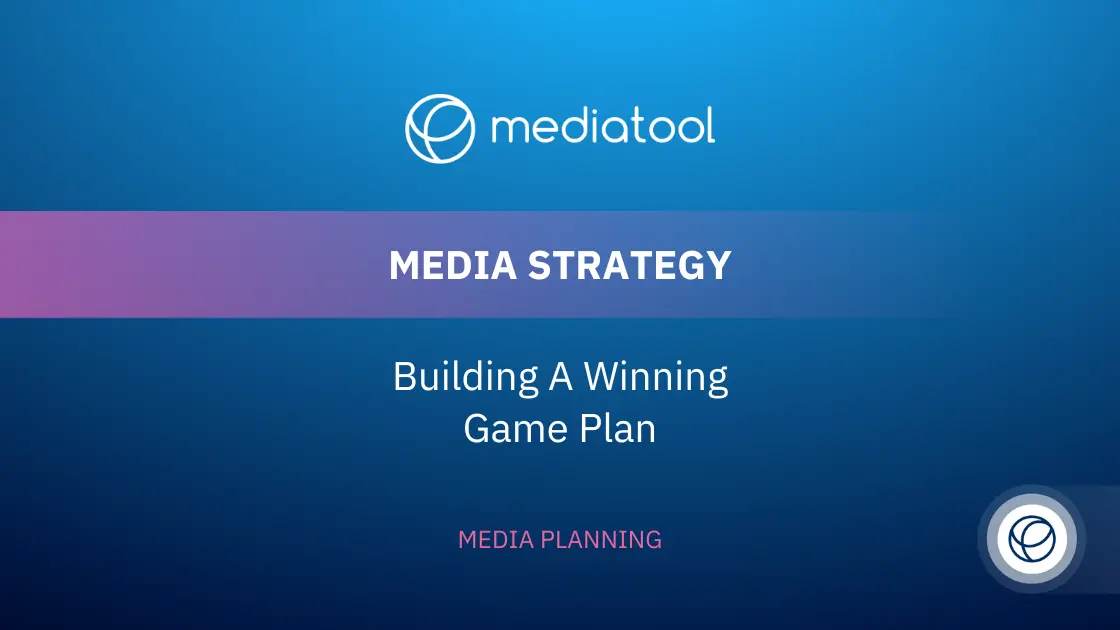In today’s business world, not having a clear communications strategy can lead to a range of issues.
86% of employees and executives cite lack of collaboration or ineffective communication as the main source of workplace failures.
Messages may get lost, important goals might not be shared, and the links between employees, customers, and stakeholders can weaken.
This lack of clear communication can lower morale and engagement within the organization.
The challenge is even bigger with the fast pace of modern communication. Organizations struggle to reach different audiences, keep up with digital changes, and maintain a consistent message across various platforms.
The solution? Developing a well-thought-out communications strategy. This strategy acts as a guide, ensuring that every message is not just sent but also properly received and understood.
This article will explore how to create a communications strategy that brings together both internal and external communication, uses different channels effectively, and supports your overall business goals.
With this strategic approach, organizations can turn communication challenges into chances for better engagement and greater success.
What is a Communications Strategy?
A communications strategy is a comprehensive plan outlining how an organization will convey its key messages to its intended audience. This strategy is pivotal in guiding all communication efforts, ensuring that every message aligns with the organization’s overall objectives.
The core of a communications strategy lies in balancing internal communications with external communications.
Internally, it focuses on fostering strong interpersonal communication among employees, enhancing employee engagement, and reducing employee turnover.
Externally, it involves crafting messages for customers and stakeholders, utilizing various communication channels such as social media, print materials, and email marketing.
Effective communication strategies encompass a blend of verbal communication, nonverbal communication, and visual communication.
This means not only choosing the right words but also considering visual aids and body language to reinforce the message.
Communication tactics vary, depending on the target audiences and the specific goals of the communication effort.
The Difference Between Internal and External Communications Strategies
Internal Communications
Fostering a Culture of Engagement:
Internal communications are the lifeblood of employee engagement within an organization. This aspect of the communications strategy focuses on creating a dialogue with employees, not just transmitting information but also listening and responding.
The aim is to develop a supportive culture that values feedback and open communication, thereby reducing employee turnover and building a sense of community.
Key Tactics and Channels:
Effective internal communications often utilize various channels like email, intranet, and team meetings. The strategy here includes a mix of verbal communication, visual aids, and even nonverbal cues like body language, to ensure a comprehensive understanding.
Regular, transparent communication efforts keep employees informed and involved, making them feel valued and part of the organization’s journey.
External Communications
Building Relationships Beyond the Organization:
External communications strategies extend your organization’s reach to customers, stakeholders, and the public.
This is where your communication channels broadcast your key messages to the intended audience, shaping public opinion and building brand identity.
Diverse Communication Channels:
Channels like social media, press releases, and public events play a crucial role in external communications.
They aren’t just about delivering a message but also about engaging with the audience, gathering feedback, and adapting the strategy for better engagement.
Effective external communication involves tailoring messages to different target audiences, ensuring clarity and relevance, and maintaining a consistent voice across all mediums.
Why Every Organization Should Have a Clear Communications Strategy

Aligning and Empowering Through Communication
Creating a Unified Voice: A clear communications strategy is crucial for any organization aiming for success and cohesion. It acts as a pivotal tool, harmonizing various communication efforts across different channels, from the traditional realms of print materials to the dynamic world of social media.
This strategic alignment ensures that key messages reach all stakeholders consistently, be they employees, customers, or partners.
Building a Strong Foundation: The strategy serves as the foundation for all communications, ensuring that the organization’s core values and goals are reflected in every message. In addition to improving coherence and consistency, a well-planned communications strategy has tangible financial benefits. Research indicates that miscommunication can have a significant financial impact, with companies of around 100 employees facing average annual costs of $420,000 due to communication-related issues.
By providing a clear direction, it helps prevent mixed messages and confusion, streamlining the flow of information and reinforcing the organization’s mission.
Consistency Breeds Trust and Credibility
Enhancing Relationships: Consistent communication, whether verbal in meetings, written communication in email marketing, or through nonverbal cues in videos, is vital for building trust.
A unified communications strategy promotes better understanding and engagement with target audiences. This consistency in tone and content fosters trust, which is essential for establishing and maintaining the organization’s credibility.
Strengthening Brand Identity: A consistent communications approach also plays a significant role in strengthening the organization’s brand identity. It ensures that all communication is in line with the brand’s image and values, enhancing recognition and loyalty among the audience.
Integrating Internal and External Communication
Balancing Different Needs: A comprehensive communications strategy skillfully balances internal and external communications. Internally, it focuses on engaging employees and minimizing turnover, fostering a culture of open dialogue and mutual respect.
Externally, it’s about effectively managing the organization’s reputation, building relationships with stakeholders, and influencing public opinion.
Adapting to Diverse Audiences: Effective strategies are adaptable, catering to the unique requirements of different audiences. They consider the nuances of interpersonal communication and employ a range of tactics and channels, ensuring messages are tailored and relevant to each segment of the audience.
Feedback and Continuous Improvement
Evolving with Insights: Incorporating regular feedback mechanisms is a hallmark of a successful communications strategy. This process is crucial for evaluating the effectiveness of communication efforts and for gathering insights that can be used to refine tactics.
It ensures that the strategy remains relevant and impactful, adapting to changing circumstances and audience needs.
This approach is especially critical in crisis management, as highlighted by a revealing statistic: while 59% of business communicators have a communications strategy, only 45% possess a documented crisis communications plan. This disparity underscores the importance of not only establishing a general communications strategy but also ensuring preparedness for unforeseen challenges.
A Comprehensive Approach
The Keystone of Organizational Success: In conclusion, a communications strategy is far more than just a part of an organization’s operations – it’s the central support system for all communication activities.
It involves choosing the right tools and resources to convey compelling messages through the most appropriate channels. By achieving communication objectives effectively, it plays a critical role in the overall success and growth of the organization.
Incorporating a clear and comprehensive communications strategy is not just beneficial; it’s essential for navigating the complexities of today’s business landscape. By doing so, organizations can ensure that their message not only reaches but also resonates with their audience, driving engagement, building trust, and ultimately contributing to sustained success.
5 Steps to Write a Successful Communications Strategy

Developing a communications strategy that hits the mark requires a thoughtful and structured approach. Here are five essential steps to create a strategy that resonates with your audience and aligns with your organization’s goals:
1. Define Your Communication Objectives
Setting the Foundation: Start by pinpointing exactly what you hope to achieve with your communications. This step is all about clarity and focus.
Whether you’re aiming to increase brand visibility, enhance employee engagement, or shape public opinion, each objective will guide the direction of your communications strategy.
To ensure these goals are effective, they should be SMART: Specific, Measurable, Achievable, Relevant, and Time-bound. This approach helps in creating a focused strategy that’s aligned with your organization’s broader objectives.
2. Identify Your Target Audience
Knowing Who You’re Talking To: Understanding who your messages are intended for is critical. Are your primary recipients your employees, stakeholders, customers, or the wider public?
This step is about diving deep into the profiles of your audience – their needs, preferences, and how they prefer to receive information.
Tailoring your approach to suit different segments of your audience ensures that your messages are not just sent but also resonate and achieve the desired effect.
3. Develop Key Messages
Crafting Your Core Message: What do you want your audience to know and remember? Developing key messages is about boiling down your objectives to clear, impactful points.
This requires a deep understanding of your audience’s perspectives and addressing their specific concerns or interests.
Consistency is key here – your messages should be uniform across all channels yet flexible enough to be adapted for various forms of communication, whether it’s a speech, a social media post, or a detailed report.
4. Choose the Right Channels
Finding the Best Mediums: With numerous channels at your disposal, selecting the most effective ones is a crucial decision.
This involves balancing internal channels (like company newsletters or team meetings) and external channels (like social media, press releases, or email campaigns). The choice should hinge on where your audience is most active and receptive.
For example, leveraging social media platforms can be highly effective for engaging younger demographics, while traditional print media may be more suitable for reaching local communities or specific industry sectors.
5. Measure and Adjust
Evaluating and Refining Your Strategy: The final step is about assessing the effectiveness of your communication efforts.
Gather feedback, analyze engagement metrics, and check if your communication objectives are being met. This is a continuous process – based on the insights gained, tweak and fine-tune your strategy.
This adaptive approach is vital as it helps your communications strategy to stay relevant and impactful over time, responding to changing audience needs and market dynamics.
Each of these steps is integral to crafting a communications strategy that not only conveys your message effectively but also strengthens your organization’s connection with its audience. By following this structured approach, you can ensure that your communications are clear, targeted, and dynamic, driving engagement and achieving your organizational goals.
Challenges and Solutions in Implementing a Communications Strategy
Identifying Common Obstacles
Overcoming Resistance to Change: One of the primary challenges in implementing a communications strategy is resistance from within the organization. Change can be daunting, and employees might be hesitant to adopt new methods or tools.
Navigating Crisis Situations: The significance of a robust communications strategy becomes particularly apparent when considering that 69% of business leaders report experiencing crises over a five-year period, with the average number of crises being three. This highlights the need for a communications strategy that not only addresses day-to-day operations but also equips the organization to effectively manage unexpected challenges.
Navigating Resource Limitations: Organizations often face constraints in terms of budget, time, or manpower, which can hinder the effective implementation of a communications strategy.
Dealing with Information Overload: In the digital age, the sheer volume of information can be overwhelming. Ensuring your message stands out and is absorbed by the audience is a significant challenge.
Implementing Effective Solutions
Building a Culture of Openness: To combat resistance, it’s essential to foster a culture of openness and inclusion. Involve employees in the development process of the communications strategy, seek their input, and address their concerns. This inclusive approach can help ease the transition and build internal support.
Leveraging Technology and Partnerships: When resources are limited, leverage technology to maximize efficiency. Utilize cost-effective digital tools for communication and collaboration. Additionally, consider partnerships or collaborations that can extend your reach without significant investment.
Clear and Concise Messaging: To avoid information overload, focus on creating clear, concise, and compelling messages. Prioritize quality over quantity in your communications. Ensure that your key messages align with your audience’s interests and needs, making them more likely to engage with your content.
Ensuring Successful Strategy Execution
Regular Training and Updates: Provide regular training and updates to keep everyone in the loop and comfortable with new communication tools and practices. Continuous education ensures that your team stays current with the latest communication trends and techniques.
Measuring Impact and Adapting: Implement mechanisms to measure the impact of your communications. Use metrics and feedback to evaluate the effectiveness of your strategy and be prepared to adapt and refine your approach based on these insights.
Maintaining Alignment with Organizational Goals: Ensure that your communications strategy remains aligned with your overall organizational goals. Regularly review and adjust the strategy to keep it relevant and effective in achieving your business objectives.
Conclusion: Navigating the Waters of Effective Communication
This examination highlights the significance of a communication strategy in modern business. It emphasizes that crafting a strategy, from setting clear objectives to choosing diverse communication channels, is vital for ensuring engagement and empowerment across the organization.
Modern organizations must broaden their communication approaches, embracing digital platforms and understanding the impact of visual cues in mediums like video content, social media, and email marketing.
These methods enhance the ability to connect effectively with various audiences.
A robust communications strategy is integral to an organization’s success, transcending mere information dissemination to create meaningful dialogues and ensure messages resonate with the audience.
Utilizing real-world examples, organizations can refine their tactics, embracing narratives, visual aids, and feedback for continuous improvement.
Ultimately, a successful communications strategy requires a deep understanding of the audience, clear goals, and a flexible approach. This ongoing effort leads to stronger engagement, relationships, and organizational achievement.





